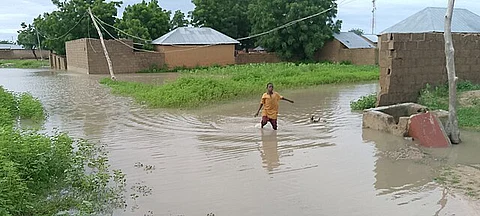

At least 117 people have died—a sharp surge from Thursday’s count of 21—and hundreds remain missing after torrential rains triggered severe flooding in Niger state.
The disaster submerged over 3,000 homes in the Tiffin Maza and Anguwan Hausawa communities of Mokwa, a critical agricultural trade hub connecting northern food producers with southern markets.
Rescue teams continue to search the debris and floodwaters, with fears the toll could climb further.
Human Toll and Survivor Accounts
Among the survivors, 29-year-old civil servant Mohammed Tanko lost 15 family members. “The property is gone. We lost everything,” he told reporters. Fisherman Danjuma Shaba, 35, now sleeps in a car park after his home collapsed: “I don’t have a house to sleep in.” The Niger State Emergency Management Agency confirmed 5,000 residents are displaced, with urgent needs for food, clean water, and medical aid.
Climate and Infrastructure Crisis
The floods struck despite warnings from Nigeria’s Meteorological Agency, which had alerted 15 states, including Niger, to flash flood risks this week. Experts attribute the escalating disasters to climate change intensifying rainfall, compounded by poor urban planning, clogged drainage systems, and construction on floodplains. This incident echoes September 2024’s Alau Dam collapse in Borno State, which killed 150 people and displaced 419,000.
Broader National Pattern
Nigeria’s rainy season (April–October) consistently brings devastation. In 2024 alone, floods killed 1,231 people and displaced 1.2 million nationwide, destroying 1.4 million farmlands and worsening food inflation. The 2022 season was even deadlier, claiming over 600 lives and displacing 1.4 million.
Response and Warnings
President Bola Tinubu has directed emergency agencies to intensify rescue operations. However, forecasts indicate more peril: the rainy season is projected to last 250–290 days in some regions, with annual rainfall reaching 3,010 mm in coastal areas. The National Emergency Management Agency urges investment in dams, drainage upgrades, and flood-resilient urban planning to mitigate future crises.